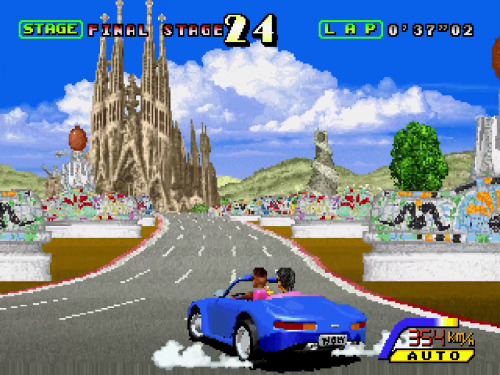In the ever-evolving world of gaming, there exists a timeless charm that transcends generations—a charm that is intricately woven into the fabric of classic arcade games. These games, which once dazzled players with their pixelated graphics and simple mechanics, continue to hold a special place in our hearts, acting as a bridge between the past and the present. In this journey down memory lane, we'll explore the impact of classic arcade games on pop culture, their enduring influence on modern gaming, and the magic that makes them forever etched in our collective consciousness.

​
The Golden Age and Its Impact:
The late 1970s to the mid-1980s marked the golden age of arcade gaming—a period that laid the foundation for the gaming industry as we know it today. Games like "Pac-Man," "Space Invaders," "Donkey Kong," and "Asteroids" introduced players to a new form of interactive entertainment. The arcade experience was a social phenomenon, drawing crowds to dimly lit arcades, amusement parks, and even local diners. The simple yet addictive gameplay captivated players of all ages, transcending demographic boundaries.
The impact of these classic arcade games on pop culture was profound. Icons like Pac-Man and Mario became cultural symbols, recognizable to even those who hadn't played the games. Popular media embraced these characters, leading to a wave of merchandise, cartoons, and even urban legends. The catchy tunes, innovative gameplay, and iconic characters embedded themselves into the cultural lexicon, shaping the way we perceive gaming and entertainment.
The Enduring Influence on Modern Gaming:
The influence of classic arcade games extends far beyond their heyday. Today's gaming landscape is infused with elements that owe their existence to these early pioneers. Here are some ways in which classic arcade games continue to shape modern gaming:
1. Gameplay Mechanics: The straightforward and intuitive gameplay mechanics of classic arcade games have become a cornerstone of modern game design. Many successful mobile games, for instance, are built upon the same principle of easy-to-learn, difficult-to-master gameplay.
2. High Scores and Competition: The concept of achieving high scores and competing against friends or strangers originated in arcades. This competitive spirit lives on in leaderboards, achievements, and online multiplayer modes in modern games.
3. Innovative Genres: Many genres that emerged during the arcade era—such as platformers, shoot 'em ups, and racing games—have evolved into full-fledged genres that continue to thrive. These genres provide a foundation for countless contemporary titles.
4. Quick and Engaging Experiences: The bite-sized gameplay sessions of classic arcade games have influenced the design of mobile games and indie titles. The ability to pick up a game for a few minutes and still feel a sense of accomplishment is a legacy of these early games.
5. Retromania: The resurgence of retro aesthetics and pixel art in modern gaming speaks to the enduring appeal of classic arcade games. Indie developers often draw inspiration from these visuals, infusing modern games with a nostalgic charm.
6. Nods and Tributes: Many modern games pay homage to classic arcade games through Easter eggs, references, and character cameos. This intergenerational dialogue between old and new adds depth and layers of meaning to gaming experiences.
The Magic of Nostalgia:
Nostalgia is a powerful force, capable of transporting us to a simpler time and evoking a sense of longing for days gone by. Classic arcade games possess a unique kind of nostalgia, a blend of memories and emotions that connect players across decades. As technology advances and gaming becomes increasingly sophisticated, the charm of pixelated sprites and lo-fi soundtracks remains intact.
The act of revisiting classic arcade games is akin to flipping through a photo album, each game a snapshot of a moment in time. Whether it's the blip of a joystick, the clang of coins dropping into a machine, or the bleeps and bloops of 8-bit music, these sensory triggers transport us to a world where joy was simple and shared with friends huddled around a glowing screen.
Preserving the Legacy:
As we celebrate the enduring influence of classic arcade games, it's important to recognize the efforts made to preserve their legacy. Museums, online emulators, and retro-themed events keep the spirit of arcades alive, allowing new generations to experience the magic that once captivated players worldwide. The emergence of "arcade bars," establishments that blend gaming with socializing, provides a modern twist on the traditional arcade experience.
Classic arcade games are more than just relics of the past—they are cultural touchstones that continue to shape the gaming landscape. Their impact on pop culture, their influence on modern game design, and the nostalgia they evoke serve as a testament to their enduring relevance. As we navigate the ever-evolving realm of gaming, we can't help but look back fondly at the pixels and beeps that started it all, acknowledging the debt we owe to the pioneers who paved the way for the immersive experiences we enjoy.








